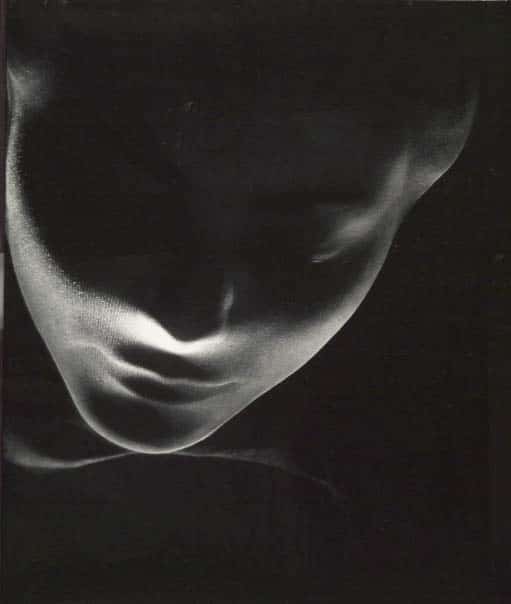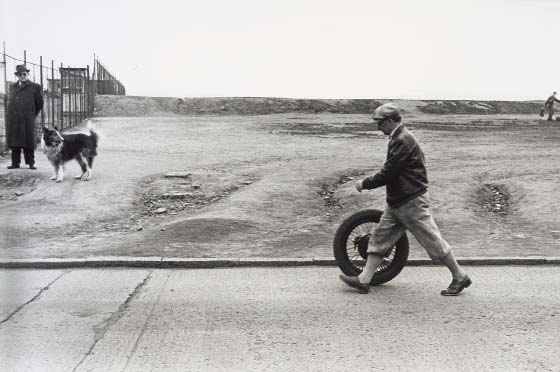a unique exhibition
Since the 1960s, in Czech galleries and publishing there has gradually developed a body of research, analysis, and historiography on photography. There first emerged projects of monographs of major figures (Drtikol, Sudek), and in the 1970s and 1980s there followed an expansion into the bordering areas of experiments in visual art and photography, research into the work of various art groups, or later the analysis of decades of creative work. The curatorial work of Anna Fárová, Antonín Dufek, Daniela Mrázková, Zdeněk Kirschner, Vladimír Birgus and other critics and historians grew to include enough material for an over-arching synthesis of the medium’s entire evolution.
The exhibition Czech Photography in the 20th Century, curated by Vladimír Birgus and Jan Mlčoch, crowns a long-term effort at a global view on Czech photography and its autonomy as well as communication with other forms of art, and its reflection of historical and political contexts.
The exhibition comprised 1,200 items by over a hundred artists, and it was hosted by three venues belonging to two institutions – the Museum of Decorative Arts, and the Gallery of the City of Prague (at the Municipal Library and the House at the Stone Bell). It was divided into 37 chapters, in which both the curators broke down the past century in their process of selection of photographs.
The curators first defined what was ”Czech“ in photography – and naturally the criterion was the nationality of the artists, though they accepted also photographers of other nationalities (German, Austrian, Slovak), if these for some considerable time worked in Czech environment, or made a significant contribution. The exhibition, for instance, featured the montages of the German exile John Heartfield from the late 1930s. In Birgus and Mlčoch’s determination of the angle or method of analyzing history, the criterion of style – in chapters such as those dealing with pure Pictorialism, Surrealism, civilism, Op-Art, photo-graphics etc., overlaps with the criterion of genre. Advertisement, documentary or fashion photography were all featured, and there appeared even a division by region – such as the section on avant-garde activities outside of Prague. The exhibition skipped almost nothing based on the technology of photography – the exhibition included even documentation of the 1960s happenings of Milan Knížák.
The exhibition provided a genuine thrill. As the visitor looked at each work at his or her leisure – it proved ideal to expand the visit to two days – their admiration for the artists as well as Czech photography as a whole continues to grow. Not only due to the major figures and their well-chosen presentation – Drtikol, Sudek, Funke, Reichmann, Medková, Koudelka, Saudek, Štreit, David, etc. – but because of the stunning number of now practically forgotten artists whose work the curators selected from archives (where they will vanish again after the exhibition). It once again served to confirm that great figures grow only in dialogue with others who are not as prolific, but from whom even two or three exceptional works serve as proof that talent and desire to achieve the ideal are not the exclusive property of a chosen few, but are the driving force of human history, including the history of art. The exhibition was an homage not only to photography, but also to the fascination with it which bore fruit in the form of outstanding solitary works by authors who are now practically anonymous.
There is a tangible tension between the straightforward, raw authenticity of at times literally anonymous photography, and works that to various degrees reflect current trends in the visual arts. In my opinion the former trend stands as the more compelling after decades have elapsed, and in the latter it seems easier to pinpoint inspiration in art rather than reality, more a variation than originality. The shot of a crowd of ten thousand people watching in the summer of 1945 the public execution of a collaborator is far more shocking than any variations on Pop-Art or graphic work, no matter how good. The language of photography has expanded considerably in a hundred years, but even so its simplest and at the same time most surprising revelations still remain extremely powerful.
Jan Mlčoch and Vladimír Birgus efficiently interspersed sections on photographic genres – a stream of documentary and reportage ran through the entire exhibition (the first section documented the period before 1918, the last the 1990s) – with sporadic sections on non-aesthetic aspects of the evolution of photography. These included surveys of amateur photography, German photography in the Czech Lands, avant-garde activity outside Prague, and portrait studios. From the number of terms that kept recurring in these meandering walks through history – advertisement, fashion, pictorial, documentary, staged photography, and so on – only two provoke some doubt. In the case of abstract photography, it is not so much the interpretation of the term, as the inclusion of photographs featuring elements of the real. Funke’s allegedly abstract Exotic Still Life (Exotické zátiší, 1928 – 1929) in fact features a hummingbird, while a still life by Václav Jíra features a spoon. The term “artistic photography” which the authors first used in the section on 1939 – 1948, and then successively in each decade until the 1990s, begs some discussion, as it essentially allows very distinct works to be placed next to each other, and also as it essentially lacks any real definition. What sense does it make to speak about artistic photography, if one is at the same time writing about Surrealist photography, l ́art informel, abstraction, or Socialist Realism – i.e., of styles and trends within the realm of the visual arts? If everything cannot be ranked in terms of extant styles, it would be adequate to instead follow traditional thematic genres – the landscape, the portrait (which emerges as a specific problem in the 1980s and 1990s), the still life, the nude – rather than apply an altogether too vague term of so-called artistic photography.
Comparing the evolution of Czech and Slovak photography, I was struck by the discovery that the Slovak social photography of the 1930s was far more evocative than its Czech counterpart. It seemed to me that the main reason for this was in the far more noticeable rudimentary nature of Slovak photography, which, to a far greater degree than Czech photography (which, defined by its journalistic orientation, aimed towards the propagandistic, naturally without much attention to composition).
With the truly exceptional scope of the exhibition, its architectural design became crucial. It had to comply with two often contradictory requirements – providing enough space for the presentation of all the work selected, and at the same time providing viewers with a reliable clue of how to take in the diverse aspects of photographic production. If the first requirement was met, the second one rather failed in the third part of the exhibition – in the Municipal Library. There the architect, Emil Zavadil, constructed somewhat of a labyrinth, where the visitor easily lost their way, rather than a spatial structure which could help navigate viewers through the second half of the 20th century. Even more than at the exhibition itself, the viewer – reader realized the incompleteness of the design when looking through the exhibition guide, which offered a clear plan, one that was however followed only difficulty in the Municipal Library.
The exhibition was accompanied by a 164-page publication, Czech Photography of the 20th Century. Like the exhibition, the book is divided into 37 chapters, concluded by an extremely useful Chronology of Czech 20th Century Photography. This informative Chronology features several key events for almost every year from 1901 to 2000 drawn from events in Czech photographic culture. The final pages of the book are devoted to a thorough list of essential literature on Czech 20th century photography.
The importance of this book derives particularly from the fact that in spite of the number of monographs, essays and books on Czech photography, a complex view on the history of the medium in the Czech lands in the 20th century is still lacking. Vladimír Birgus and Jan Mlčoch sensitively combine a penetrating view on the metamorphoses of the poetics and stylistics of a technical means of expression with those of the history of culture and society. Their perspective on the evolution of photography is not just that of pure art history, but also on politics and history, so that they are always aware of the connection between photography, politics and technology, seeing them not as separate, but as mutually influential.
The scope of the text makes it evident that the limits of the work required from both authors lends the endeavor an encyclopedic conciseness and clarity. At the same time, they could not abolish from their view a sense of the continuity of an evolution of a discipline of art. They coped with both challenges with great accomplishment – both are authors of long experience, particularly Vladimír Birgus, so that it comes as no surprise that limitations of space did not result in the omission of crucial facts or names, or in a vague definition of the various poetics in photography.
The sub-title of the book is that of guidebook – in the sense that the viewer could purchase it as a guide to the exhibition. None of the subtitle, however, is lost even for those who could not visit the exhibition this summer: Czech Photography of the 20th Century is an outstanding work of great precision and erudition, and at the same time a captivatingly written guide to the history of Czech photography.
In a unique and revealing way, this joint project of the Museum of Decorative Arts and the Gallery of the City of Prague also tracked the history of Czech society (often overlapping with Slovak history). This exceptional exhibition offered a well-informed as well as extraordinarily complex view on the transformations of an art. Czech Photography of the 20th Century was also proof of the maturity of Czech photographic culture, as well as the erudition and competence of historians in rendering its history. A book of the same name by both authors will come out in the fall of 2006, as the conclusion of the entire project.
#6 The Recycle Image
Archive
- #45 hypertension
- #44 empathy
- #43 collecting
- #42 food
- #41 postdigital photography
- #40 earthlings
- #39 delight, pain
- #38 death, when you think about it
- #37 uneven ground
- #36 new utopias
- #35 living with humans
- #34 archaeology of euphoria
- #33 investigation
- #32 Non-work
- #31 Body
- #30 Eye In The Sky
- #29 Contemplation
- #28 Cultura / Natura
- #27 Cars
- #26 Documentary Strategies
- #25 Popular Music
- #24 Seeing Is Believing
- #23 Artificial Worlds
- #22 Image and Text
- #21 On Photography
- #20 Public Art
- #19 Film
- #18 80'
- #17 Amateur Photography
- #16 Photography and Painting
- #15 Prague
- #14 Commerce
- #13 Family
- #12 Reconstruction
- #11 Performance
- #10 Eroticon
- #9 Architecture
- #8 Landscape
- #7 New Staged Photography
- #6 The Recycle Image
- #5 Borders Of Documentary
- #4 Intimacy
- #3 Transforming Of Symbol
- #2 Collective Authorship
- #1 Face




